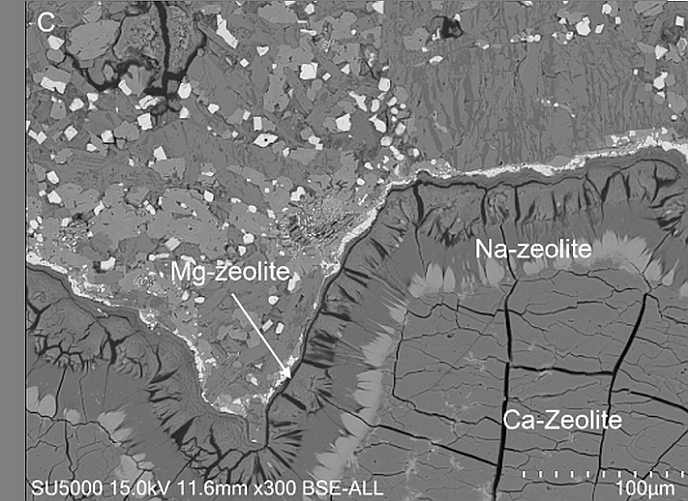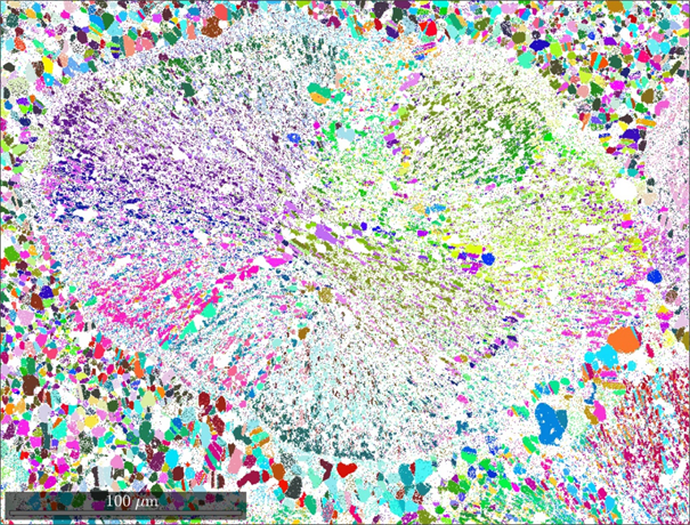Visit the DIME project website, University of Oslo
Especially in the absence of fluids, mineral reactions are often too slow to allow for constant equilibration of a rock to changes in pressure and temperature, so that major parts of the lithosphere are metastable. If fluids infiltrate such rocks and induce their re-equilibration under far-from equilibrium conditions, energy is dissipated in the form of heat and irreversible deformation.
DIME investigates such processes with a variety of petrological, geochemical, and microstructural techniques. Below do you find two examples of electron microscopy applications to such projects:
Example A: When characterizing basalts from the Faroe Islands, North Atlantic Ocean and their potential for CO2 sequestration, frozen-in reactions of one zeolite to another were observed in thinsection (figure A). Zeolites fill vesicles in the basalt and therefore influence its permeability. Their dissolution rates (influenced by their high-surface microstructures) affect later fluid chemistry and carbonation reactions.

Reference MScThesis/UiO: Meakins, MWJ. 2021. Understanding offshore flood basalt sequences using onshore analogues with application to permanent CO2 storage: Examples from the Faroe Islands. Permalink: http://urn.nb.no/URN:NBN:no-92044
Example B: When frictional melts produced during earthquakes are quenched to a glass or fine-grained crystals to form a pseudotachylyte, the system is far from equilibrium. One of the effects of strong undercooling is that crystals do not form their thermodynamically preferred shapes, but often become very elongated. Sometimes, those microlites radiate outwards from a common centre to form a spherulite (figure B), in which the orientation of the crystallites changes continuously around the centre.

Additional information
- The DIME project started in 2015 and will end in 2022.
- About the research (URL): www.mn.uio.no/geo/english/research/projects/dime/
- The DIME project in CORDIS | EU Research Results: Grant agreement ID: 669972